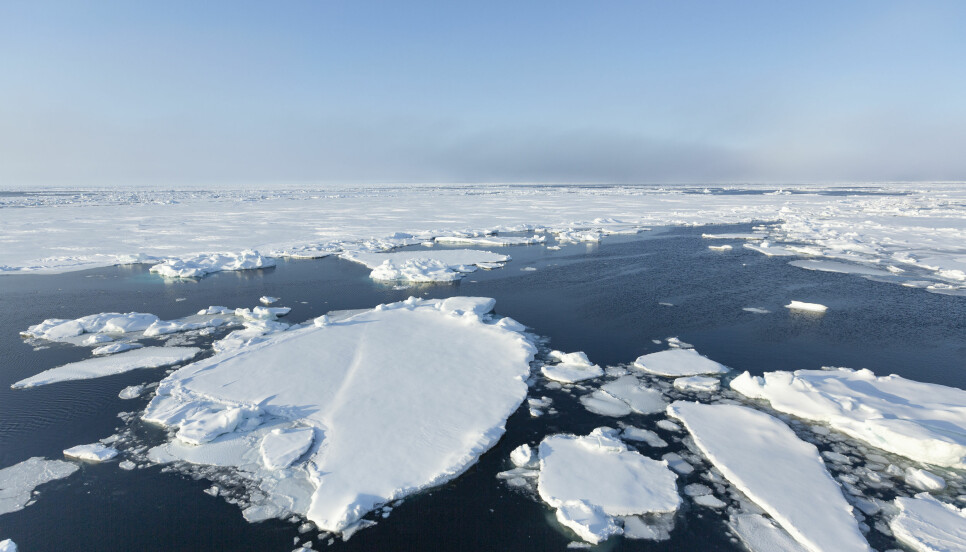
Is the summer in the Barents Sea hot this year?
A blog from the northern Barents Sea on a July day in 2021.
The question is not asked because we are curious about the bathing temperature before the holiday season - we know it is quite cold no matter which time of year refer to in the Barents Sea. But because we are trying to understand why climate change has such a big impact on the northern Barents Sea, and what the changes mean for the ecosystem.
The northern Barents Sea is an ocean area that has been characterized by sea ice cover for parts of the year, in fact for over ten thousand years, according to a recently published study of geological cores from the area (Pienkowski et al. 2021). It is also part of the continental shelf area around the Arctic Ocean, where the reduction in sea ice has been greatest in recent decades, according to another publication (Årthun et al. 2021). Both works are results from the Nansen Legacy project.
Important to also observe the late summer
The northern Barents Sea is characterized by both the Atlantic Ocean current, which brings with it heat and nutrients from the south, and by sea ice that either freezes locally in winter or drifts in from the Arctic Basin in the north. To better understand what happens in the northern sea areas during winter, but also how the different seasons affect each other, we have conducted studies of the different seasons during the last two years. This year, we have conducted major surveys of, among other things, sea ice, seawater temperature and the ecosystem both during the coldest winter in March and while spring made its entrance in May. Therefore, it is exciting to go north with the research icebreaker Kronprins Haakon to observe the late summer conditions of this year following a winter and spring characterized by variable ice cover.
Different types of sea ice in the Barents Sea
Does the winter leave a signature in the water column in the form of, for example, seawater temperatures in the summer? One of the things that leaves traces is the wind conditions. In the period before we went north, there were northern winds that pushed ice from the Arctic Basin into the Barents Sea. We therefore still have quite a lot of ice north of the Barents Sea this year. But it is not just ice that is being pushed in.
When the ice drifts south through the Barents Sea and meets warmer surface water, it melts and the fresh water from the ice mixes with the seawater here. Atlantic water from the south, cooling of the water as it flows north through the Barents Sea, ice formation that freezes the salt in winter, and melting of sea ice that adds fresh water in summer and dilutes the salty Atlantic water, are some of the ingredients that contribute to the northern Barents Sea blissful mixture of water with different history and character, such as temperature and salt.
The animals that live on the seabed can therefore be surrounded by warmer and saltier Atlantic water at a few degrees, while further up in the water there is cold and fresher Arctic water that is -1.5 degrees that surrounds the microalgae that live there (the seawater here first freezes - 1.9 degrees due to the salt content). This blissful mixture of different types of water does not really mix but forms different layers. And the stratification is variable, but important because it regulates the fertilization of the microalgae with nutrient-rich deep water, and thus how large the "crop" will be.
Different experts onboard to take a closer look at the Barents Sea
Ocean acidification is also on the schedule. Increased atmospheric CO2 results in increased ocean CO2 concentrations to achieve equilibrium. The sea ice act as a protecting lid covering the Arctic Ocean, but the thinner and more fragmented the sea ice becomes, the more CO2 reach the Arctic waters as well, increasing the ocean acidification also here.
That is why we have with us experts in both ocean acidification, ocean currents and stratification, in nutrients - or fertilizers, experts in both microalgae communities and growth, expertise in zooplankton, fish and sea ice when we go north on a research cruise. Together we collect the third data set from the late summer since 2018, but the first where we have both winter and spring data in advance. Thus, we can both understand more of how the seasons affect each other up here in the northern Barents Sea, but also get a better overview of how different years vary both in terms of marine environment and how the ecosystem down to the smallest organisms responds to changes both briefly and gradually also longer term.
References
Pieńkowski AJ, Husum K, Belt ST, Ninnemann U, Köseoğlu D, Divine DV, Smik L, Knies J, Hogan K, Noormets R (2021) Seasonal sea ice persisted through the Holocene Thermal Maximum at 80°N. Communications Earth & Environment 2: 124. doi.org/10.1038/s43247-021-00191-x
Årthun M, Onarheim IH, Dörr J, Eldevik T (2021) The seasonal and regional transition to an ice-free Arctic. Geophysical Research Letters 48: e2020GL090825. doi.org/10.1029/2020GL090825







